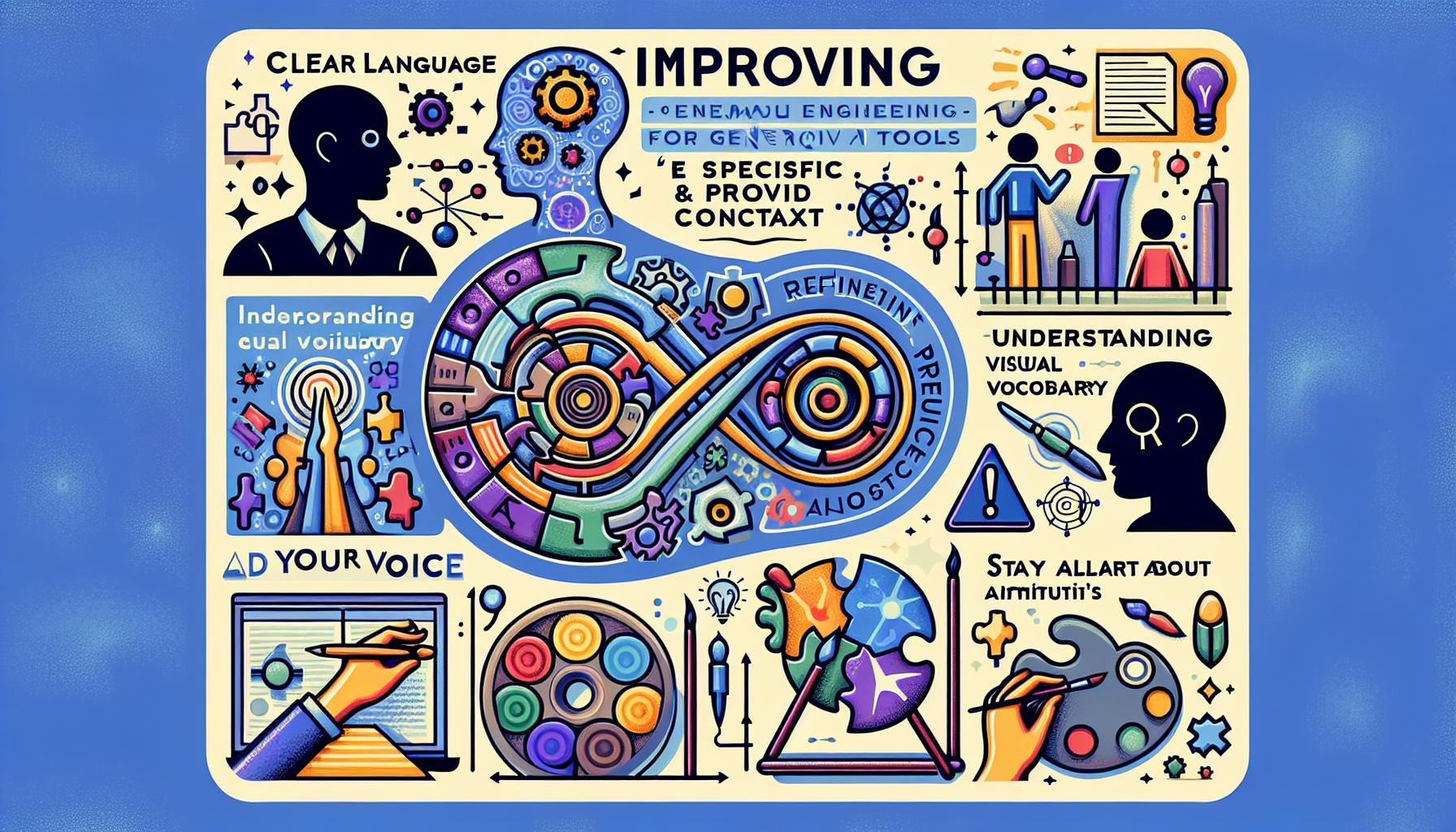Mastering Prompt Engineering for Generative AI Tools: A Comprehensive Guide

Introduction
As Artificial Intelligence (AI) technology advances, mastering prompt engineering—how we communicate instructions to A.I. tools—has become vital. This skill significantly influences the quality and precision of AI-generated results, whether for text, images, or videos. Here, we will delve into various techniques to improve your prompt engineering skills for optimal interactions with generative A.I. tools.
Using Clear Language
Effective communication with A.I. requires simplicity and directness, just as with human interactions. This enhances the AI's ability to understand and accurately execute requests. For instance, when using an A.I. image generator, a prompt like 'Create a photo of a sunset at the beach' is more effective than a vague or convoluted description. Similarly, specific instructions help text-based A.I. like ChatGPT perform better, such as requesting '5 paragraphs on what A.I. is and why it is important' instead of a generic query.
Be Specific and Provide Context
AI tools cannot infer details beyond what is provided. Specificity coupled with context in prompts enables the A.I. to produce content closer to your vision. For example, instead of asking for a 'Mediterranean landscape,' a detailed prompt such as 'a villa by the sea, fields of flowers, an occasional animal, and very few people' yields better results. Context also enhances the utility, as seen in a prompt like 'Plan an itinerary for five days in Morocco in October, focusing on major sites and museums, using a taxi for transportation.'
Feedback and Refinement
AI interactions are iterative. Should the initial output not meet expectations, refining the prompt based on feedback can significantly improve the results. For a response that's too complex, a simplified rephrasing might help, such as 'Explain it to me like I'm a 10-year-old.' Continuous adjustments and feedback fine-tune the AI's responses to better align with user needs.
Limitations of Generative AI
Despite their capabilities, A.I. tools are not infallible. They can generate inaccurate or ethically questionable content. Users should critically evaluate A.I. outputs for validity and may need to edit these outputs to maintain a personal touch or style. This is important for both text and media, ensuring the content remains human-like and appropriate.
Common Pitfalls to Avoid
It's crucial to avoid overly complex or vague prompts. Ambiguity can lead to a broad range of outputs, some of which may not meet your needs. Additionally, assuming the A.I. has prior knowledge or understanding can lead to incomplete or incorrect outputs.
Specific Examples of Providing Detailed Context
The prompt 'Describe a modern kitchen' might be too vague for an A.I. like GPT-3. Instead, you could specify: 'Describe a modern kitchen with stainless steel appliances, a large island with quartz countertop, and open shelving.' Similarly, for an image generation AI, instead of 'Show me a tiger,' you might use 'Show a Bengal tiger standing in a dense jungle with a waterfall in the background during daytime.'
Evaluating Validity and Ethical Considerations
Users should critically assess AI-generated content for accuracy and ethical considerations. Cross-referencing information with trusted sources is essential. Furthermore, be aware of biases that the A.I. might introduce and ensure the generated content does not perpetuate harmful stereotypes or misinformation.
Key Takeaways
1. Use Clear Language: Straightforward prompts yield more accurate results.
2. Be Specific: Detailed and context-rich descriptions enhance A.I. output quality.
3. Refine and Repeat: Iterative feedback improves A.I. responsiveness.
4. Add Your Voice: Edit AI-generated content to maintain authenticity.
5. Understand Visual Vocabulary: Use clear, descriptive language for generating visuals.
6. Stay Alert: Recognize AI's limitations and ethical implications.
By applying these techniques, you can harness the full potential of AI, making your interactions with these powerful tools more effective.
Conclusion
Mastering prompt engineering for generative A.I. tools allows for more precise and relevant outputs, whether you're generating text, images, or videos. Clear language, specificity, iterative feedback, and ethical considerations play essential roles in this process. By honing these skills, you will be well-equipped to make the most out of generative A.I. technologies.




